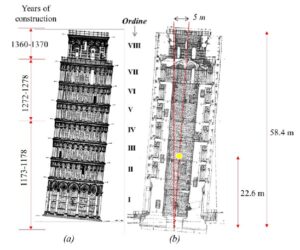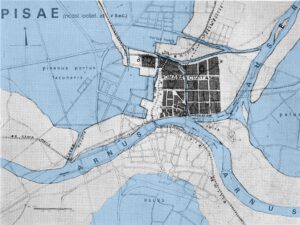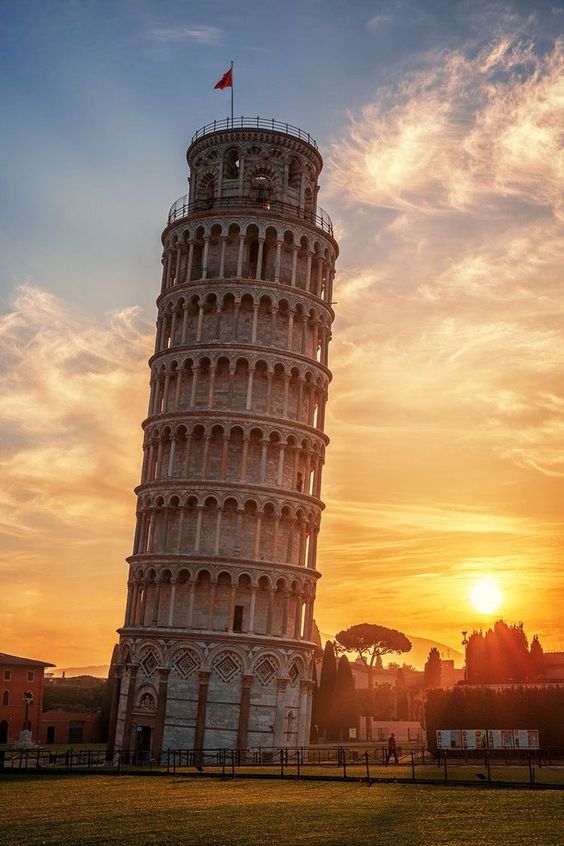The Leaning Tower of Pisa is considered safe for visitors today. Here’s why:
- Stabilization Efforts: In the 1990s, engineers undertook a major project to stabilize the tower. They successfully reduced the tilt by a few degrees, making it less likely to fall.
- Monitoring and Maintenance: The tower is constantly monitored for any movement or changes. Regular maintenance ensures its continued stability.
- Reduced Tilt: While it still leans, the angle is now much safer than it was before the stabilization efforts.
It’s important to remember that no structure is guaranteed to last forever. However, with ongoing monitoring and maintenance, the Leaning Tower of Pisa is expected to remain a safe and iconic landmark for many years to come.
The Leaning Tower of Pisa: A Tilted History
The Leaning Tower of Pisa isn’t leaning because of a construction mistake; it’s leaning because the ground it’s built on just isn’t that sturdy. Here’s the story:

- Weak Foundation: The tower’s foundation simply couldn’t handle its weight. The Pisan soil, a bit like soggy cake, wasn’t strong enough. To make matters worse, the foundation doesn’t reach solid bedrock.
- Uneven Support: As if a weak base wasn’t enough, one side of the foundation sits on slightly firmer ground than the other. This uneven support caused the tower to tilt instead of sinking straight down.
- Leaning From the Start: The tower began its tilt during construction itself! The builders tried to compensate by making the upper floors slightly taller on one side, creating a subtle curve in the tower. Unfortunately, the lean kept getting worse.
- Saving the Leaning Wonder: By the 1990s, engineers worried the tower might topple. A major effort was launched to correct the tilt. They carefully removed soil from beneath the higher side of the tower, slowly nudging it back towards a safer angle. Interestingly, they didn’t straighten it completely – the tilt is what makes the Leaning Tower so famous!
- A Soggy History: Understanding the unstable soil is key. In ancient times, Pisa was surrounded by vast wetlands and swamps, which have since dried up. This historical detail helps explain the ground’s inability to support the tower’s weight.
All About Leaning Tower of Pisa
The Leaning Tower of Pisa is one of the most popular tourist destinations in Italy. It is a freestanding bell tower for the Pisa Cathedral, and it is known for its unintended tilt. Here are some interesting facts for tourists visiting the Leaning Tower of Pisa:

- Why is it leaning? The Leaning Tower of Pisa began to tilt during construction in the 12th century due to the soft foundation of the underlying soil. The builders tried to correct the lean by making the upper floors slightly higher on one side, but the tower continued to tilt throughout the centuries.
- Climbing the tower. You can climb the Leaning Tower of Pisa! The climb to the top takes about 30 minutes and offers stunning views of Pisa. However, there are only a limited number of tickets available each day, so be sure to book your tickets in advance. The base ticket price is 18 € if bought on site.
- How to get there. The Leaning Tower of Pisa is located in Piazza dei Miracoli (Square of Miracles), which is a short walk from Pisa’s city center. You can reach Pisa by train or bus from other major Italian cities.
- What else to see in Pisa. While the Leaning Tower of Pisa is the star attraction, there are other things to see in Pisa, including the Pisa Cathedral, the Baptistery, and the Camposanto (cemetery).
Here are some additional tips for tourists visiting the Leaning Tower of Pisa:
- Purchase your tickets online in advance, especially during peak season.
- Wear comfortable shoes, as there are stairs to climb to the top of the tower.
- Be aware of pickpockets, as they can be a problem in crowded tourist areas.
- Enjoy your visit to this iconic landmark!
Getting to Pisa, Italy: A Guide for Travelers
Pisa, home to the iconic Leaning Tower, offers easy access for travelers arriving by air or from nearby Italian cities. Here’s how to get to Pisa’s city center:
Flying into Pisa:
- Galileo Galilei Airport: Pisa boasts an international airport well-connected to both domestic and international destinations.
Connecting from Other Italian Cities:
- Proximity to Major Hubs: Pisa is conveniently located near major Italian cities like Florence (Firenze) and Lucca, making it a great stop on your Italian itinerary.
From Pisa Airport to City Center:
Public Transportation:
- Bus: The most direct option – the bus takes you straight to Piazza dei Miracoli (Square of Miracles), where the Leaning Tower is located. It runs frequently (four times an hour) and is budget-friendly at just €2 per ticket.
- Train: A slightly less frequent option (twice an hour), the train offers a comfortable ride to the city center for a slightly higher price of €1.10 per ticket.
- Taxi: If you prefer a quicker and more personalized arrival, taxis are readily available at the airport. Expect fares to range from €10-15.
Ready to Climb the Leaning Tower?
- Age Requirements: To ensure everyone’s safety, children under 8 years old are not permitted to climb the Leaning Tower of Pisa.
- Family Fun: For visitors between 8 and 18 years old, climbing the Tower is a thrilling experience! However, they must be accompanied by an adult throughout the climb.
- Ticket Prices: Please note that children’s tickets are the same price as adult tickets. There are currently no discounts available for children.
